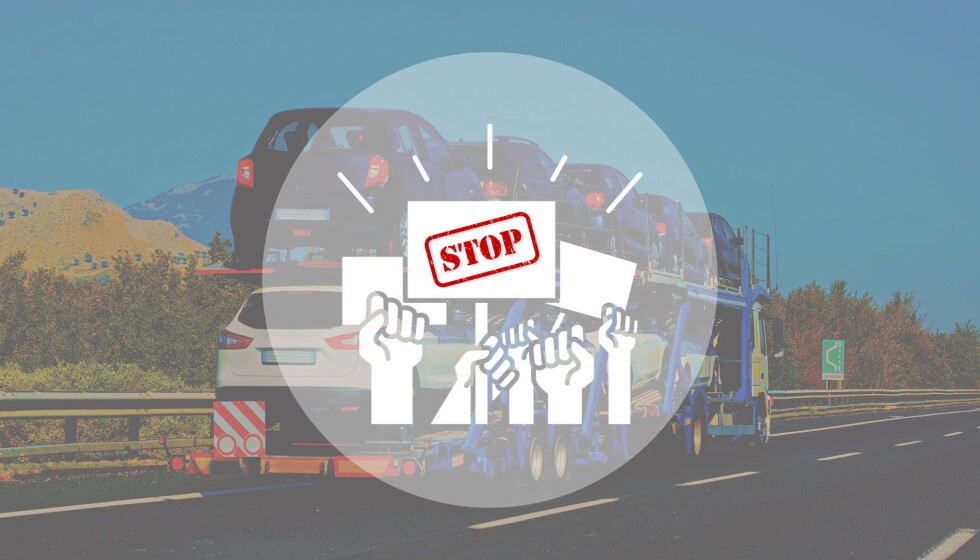At the end of 2023, namely from November 6, Polish "activists" blocked the movement of trucks through the border checkpoints "Korchova — Krakowiec", "Grebenne — Rava-Ruska", "Dorogusk — Yagodin". Subsequently, on November 23, the "Medyka-Sheghini" crossing was also blocked. Later, these "activists", who call themselves transporters or farmers, were joined by the same "indifferent citizens" from Romania, who started blocking the checkpoint from their side.
On January 17 , 2023, the checkpoints were unlocked. It is possible that it will be temporary, as "European Truth" reports. According to the publication, Tomasz Borkowski from the Polish Committee for the Protection of Carriers and Transport Employers said the following: "This is not the end, but the protest will be suspended... We have agreed on certain conditions, we will give the government time to work, as this is a new government."
It is clear that such "actions" could not pass without a trace, in particular in the sector of motor vehicle import. Specialists of the Institute of Car Market Research studied all the available information on imports and determined how the blocking of borders affected the import of cars to Ukraine.
Customs clearance of vehicles at regional customs
The dynamics of clearances at regional customs did not undergo significant changes due to these blockages, but it is generally noticeable that clearances at western customs (in particular, Volyn) have increased since the beginning of the year. In the end, the blocking of borders could affect only the total number of vehicles (vehicles), since customs clearance mostly takes place at regional customs, much less often — directly at checkpoints.
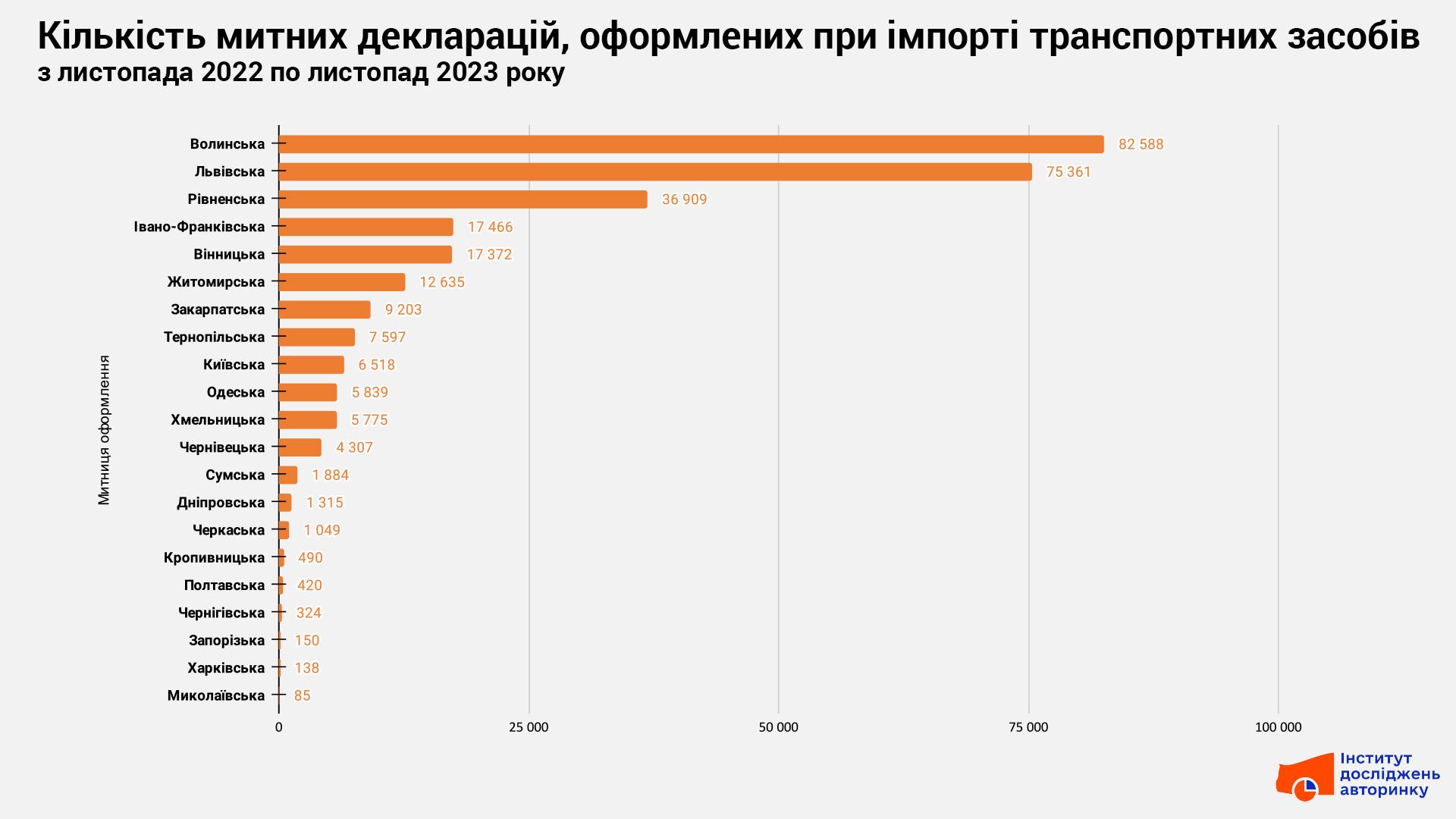
More noticeable changes in the way vehicles are imported : the share of small car transporters (with a gross weight of up to 7 tons) and trailer carriages, which can transport passenger cars, grew the most. The peak of the introduction of vehicles in this way fell just at the beginning of the blocking of the checkpoint.
At the same time, as can be seen in the diagram, the flow of TK did not decrease on its own (all types of TK are taken into account), and the import by mixed methods — registration in the customs regime of imports from other customs regimes (customs warehouse, temporary importation, etc.) also increased.
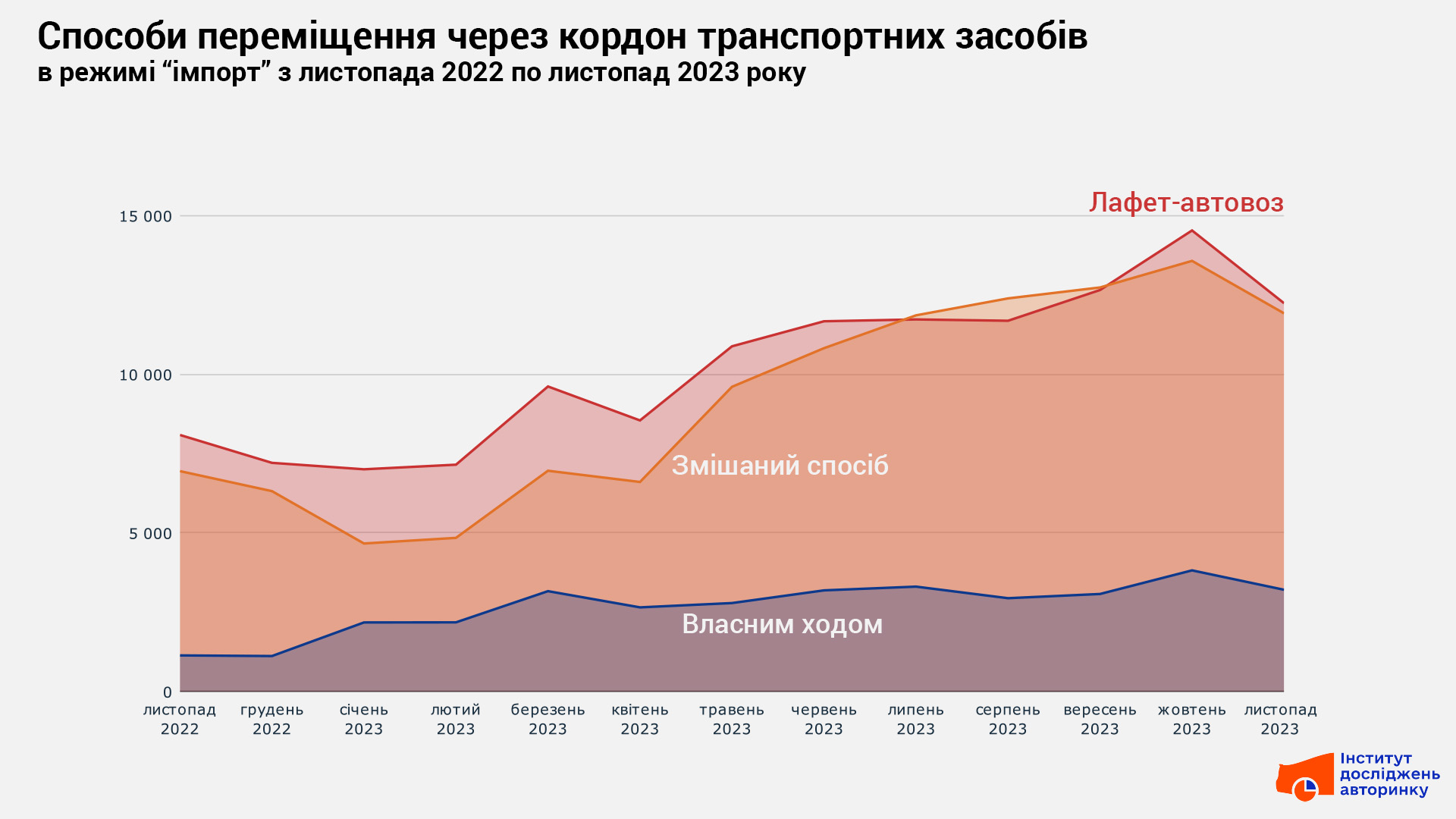
"In practice, the number of cars, primarily passenger cars, which were imported by large trucks designed for 6-8 cars, has decreased. Now this flow is somewhat reoriented to carriages and platforms that accept one car, or two, if with a trailer, " — explains Yuliya Rykovska, CEO of West Auto Hub, a company that delivers cars from Europe. "However, it is far not all vehicles can be imported in this way - there are heavy special equipment, cargo semi-trailers and other similar options that can be transported only by large "trucks". Which, unfortunately, now have to wait in queues for weeks."
Dynamics of imports through border checkpoints
The largest number of vehicles to Ukraine crossed the border from Poland. So because this country has the most checkpoints, in particular those that have the possibility of registering vehicles with a gross weight of more than 7 tons, logistics also have an impact — transport from other European countries (Germany, where the largest car market) mostly chooses the shortest route, which passes through Poland.
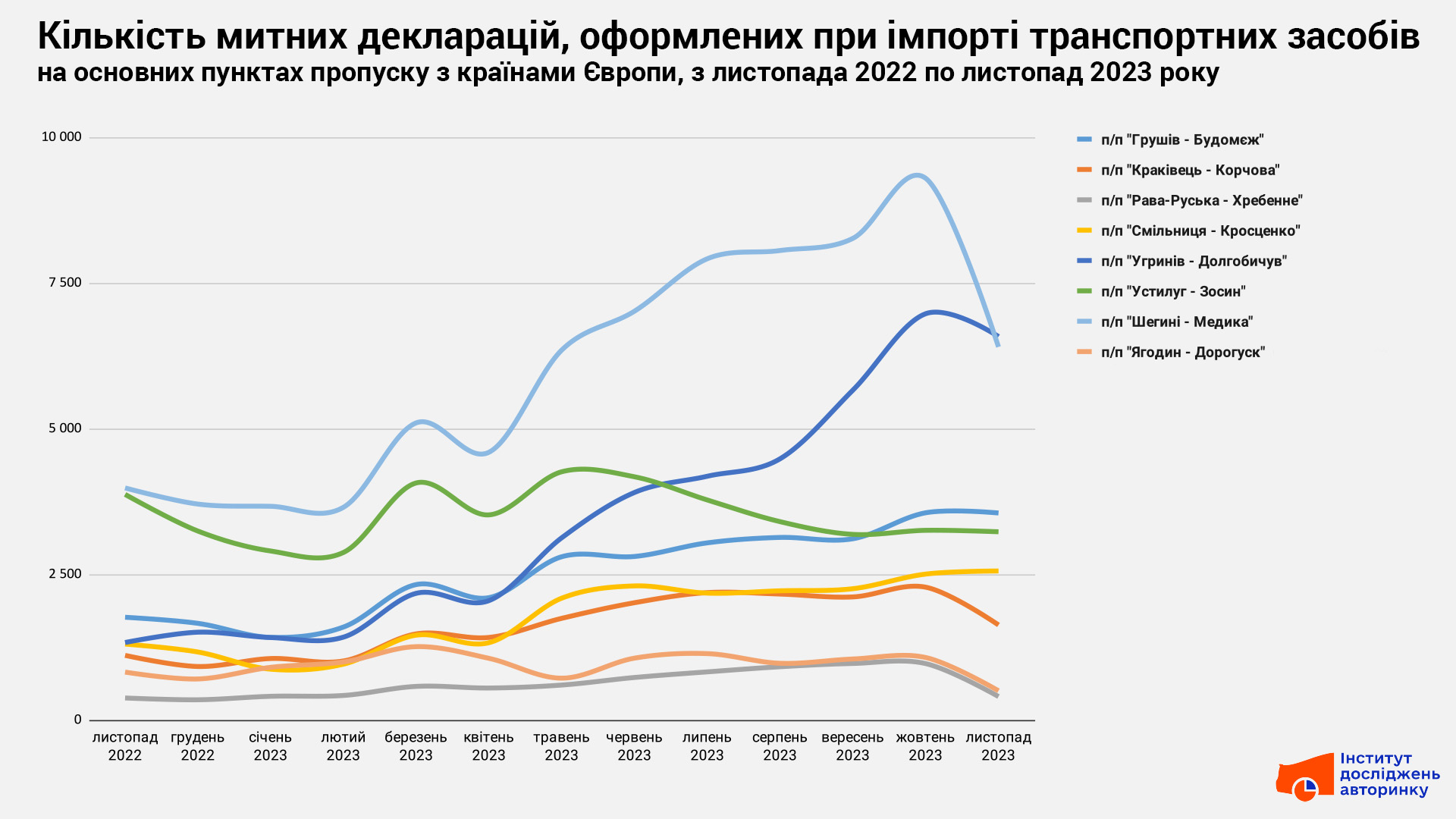
"Border blocking could have affected the redistribution of shares of newly arrived cars from different countries, but this did not happen, as most drivers consider it more appropriate to wait in line than to "wind up" extra mileage in search of a free checkpoint, and even then without guarantees that so far it will be possible to reach it, it will not be blocked by new "activists". Also, Poland is among the leaders in terms of the number of imports due to the well-established process of processing customs documents, most drivers speak Polish at least at a minimum level, which is also an important factor," concludes Yulia Rykovska.
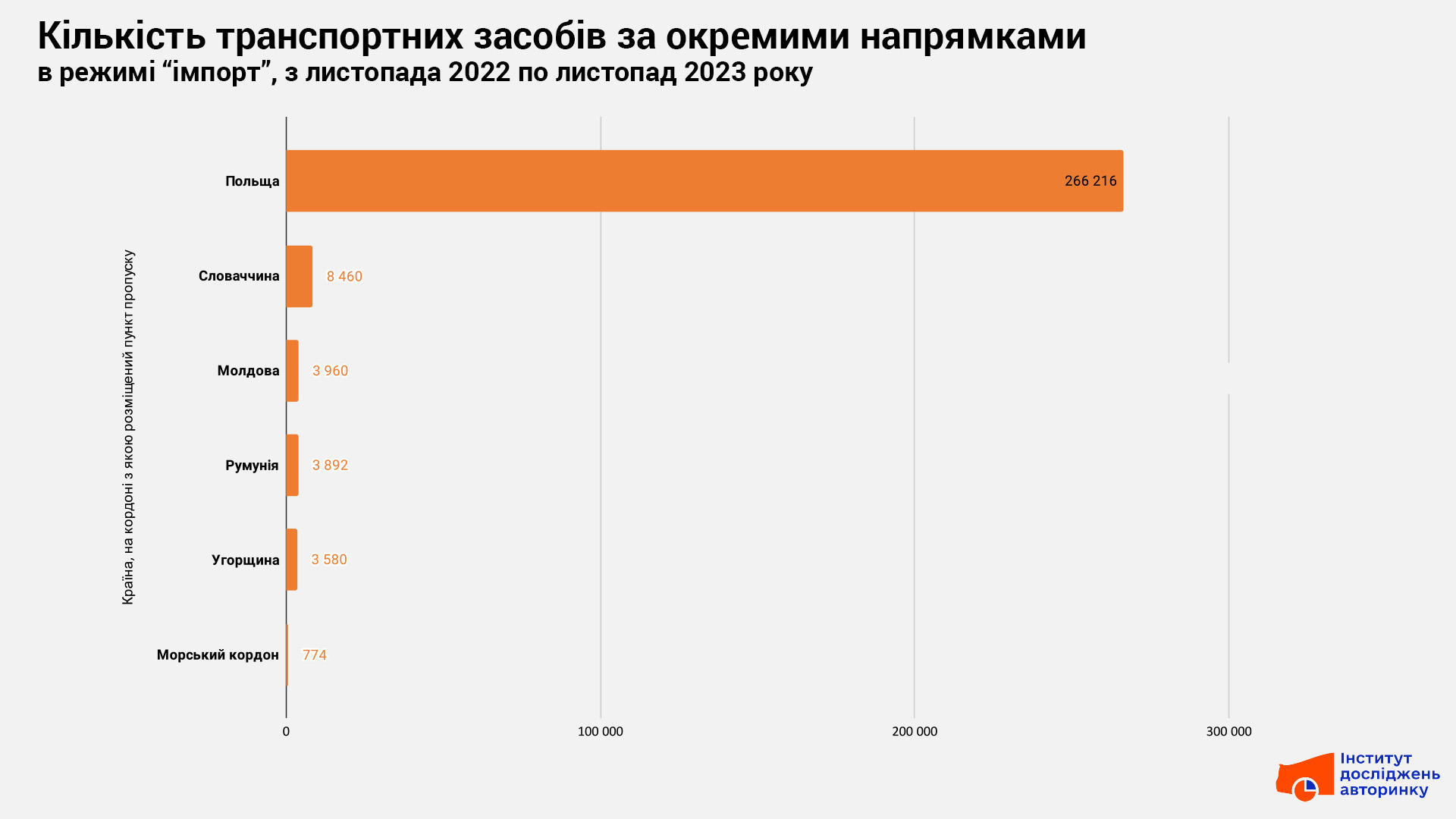
Regarding individual checkpoints, all changes are visible in the following diagram. The blockade mostly slowed the traffic for customs clearance through the Sheghini highway , while the traffic through the Ughryniv highway increased. The flow through the Yagodyn and Krakovets highways has decreased somewhat. Despite this, according to the results in the specified time period, PE "Shegini" still remained among the leaders in terms of the number of issued TORs.
What changed border blocking in practice?
According to the statistical data studied by specialists of the Institute of Car Market Research, the quantitative import of motor vehicles into Ukraine due to the blocking of checkpoints has not undergone significant changes. However, there have been qualitative changes — in particular, the delivery time has increased, as reported by practitioners in this field of activity, and the price of delivery services has also increased slightly. Since the reorientation of carriers to "small cars" entails the need to pay one driver for the transportation of not 6-8, but 1-2 passenger cars, the daily freight of tow trucks/trucks, which waste their time in artificially created queues, is also added.
Subscribe to the Telegram channel of the Auto Market Research Institute to be the first to receive information without advertising or spam.
